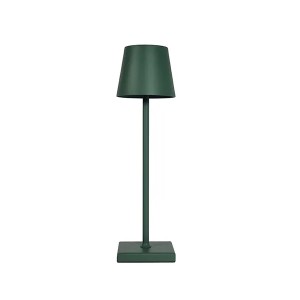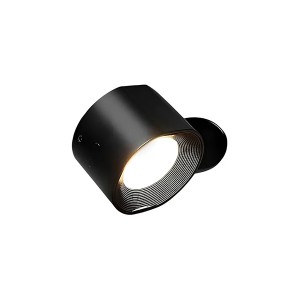Different lighting types have their own unique characteristics and applicable scenarios, and indoor lighting designers need to choose the right lighting type according to different space needs and design styles to achieve the best lighting effect. At the same time, with the continuous progress of science and technology, new types of lamps are also emerging, and indoor lighting designers need to constantly learn and update their knowledge to keep up with the pace of the times



The indoor lights design in t he world be in favor of fashion. And the characteristics of common lamps in door lighting design. The types of indoor lamps commonly used in indoor lighting design are chandeliers, all lamps table lamps, floor lamps, tube lights, spotlights, panel lights, etc each lamp has its its own unique characteristics and application scenarios.
Chandelier is one of the most common lamps in indoor lighting design. It is characterized by diverse shapes, soft light and a wide range of illumination. It is suitable for lighting large spaces such as living room, dining room bedroom. Bi lamp is a kind of wall mounted lamps, which is characterized by simple modeling, space-saving, limited exposure range, suitable for corridor, bathroom, bedside and other small space lighting. Table lamps and floor lamps are a kind of local lighting lamps, which are characterized by diverse shapes, easy to move, limited exposure rage, and are suitable for suitable for study, office, living room and other scenes that need local lighting.
Indoor lighting is a vital aspect of interior design that greatly impacts the ambiance, functionality, and overall feel of a space. However, it's interesting to note that indoor lighting preferences and trends can vary across different regions of the world. In this article, we will explore the differences between indoor lighting in Europe and the United States, considering factors such as design styles, cultural influences, and energy efficiency.
Design Styles and Aesthetic Preferences
Europe and the United States have distinct design sensibilities that extend to indoor lighting choices. European indoor lighting tends to lean towards a more classical and ornate style, reflecting the rich history and architectural heritage of the continent. Chandeliers, wall sconces, and pendant lights with intricate details and elegant materials are commonly seen in European interiors. These fixtures often serve as statement pieces that add a touch of luxury and sophistication to the space.
On the other hand, indoor lighting in the United States often embraces a more diverse range of styles, influenced by its multicultural society. While traditional styles are still prevalent, there is a strong trend towards modern and minimalist designs. Clean lines, geometric shapes, and neutral colors are characteristic of American lighting aesthetics. Pendant lights with exposed bulbs and adjustable fixtures for task lighting are popular choices that align with the functional yet stylish American design approach.
Cultural Influences and Lighting Usage
Cultural differences also play a significant role in shaping indoor lighting choices. European countries, with their emphasis on history and tradition, often use lighting to highlight architectural features and create a sense of warmth and coziness. Candles and soft, warm-colored light sources are frequently utilized to evoke a sense of nostalgia and connection to the past. In countries like Italy and Spain, where outdoor socializing is common, indoor lighting is designed to seamlessly transition from indoor to outdoor spaces.
In contrast, the United States, with its more modern and fast-paced lifestyle, tends to prioritize functionality and versatility in indoor lighting. Task lighting for workspaces, kitchens, and reading areas is given high importance. Moreover, the concept of layering light – combining ambient, task, and accent lighting – is deeply ingrained in American lighting design, allowing for flexible lighting options to suit different activities throughout the day.
Energy Efficiency and Sustainability
Energy efficiency and sustainability have become global concerns, influencing lighting choices around the world. In recent years, Europe has been a leader in adopting energy-efficient lighting technologies. The European Union's regulations and initiatives, such as the ban on incandescent bulbs and the promotion of LED lighting, have driven a shift towards more eco-friendly options. European indoor lighting designs often prioritize energy efficiency while maintaining aesthetic appeal.
The United States has also been making strides in energy-efficient lighting, but the adoption has been more gradual. The shift towards LED lighting has gained momentum, driven by the desire to reduce energy consumption and utility bills. Many American lighting designers are now focusing on creating fixtures that blend energy efficiency with design innovation, catering to a growing environmentally conscious consumer base.
Indoor lighting is a reflection of culture, design trends, and societal values. While both Europe and the United States share a common goal of creating functional and visually appealing indoor spaces, their approaches differ due to historical influences, cultural norms, and regional aesthetics. European lighting often emphasizes elegance and heritage, while American lighting tends to be more diverse, functional, and adaptable. Additionally, the growing emphasis on energy efficiency and sustainability is reshaping lighting choices in both regions. Understanding these differences provides valuable insights into the intersection of design, culture, and technology in the world of indoor lighting.



Dongguan Wonled lighting Co., Ltd. is a professional designer and manufacturer of indoor lighting fixtures established in 2008. Our finished products are mainly exported to the markets of Europe and America. We are a subsidiary company of Dong Guan Wan Ming Industry Co., Ltd.
Our mother company Wan Ming was established in 1995 and is a professional producer of metal parts in lighting industry. Products concentrated in Aluminum and Zinc alloy die- casting, metal tubes, flexible tubes and related accessories. Recenty, Wan Ming Group already become one of the key producer of metal parts in lighting field with around 800 staffs/workers and supplying parts for well-known customers like IKEA, PHILIPS and WALMART.
The types of lights Wonled have:

